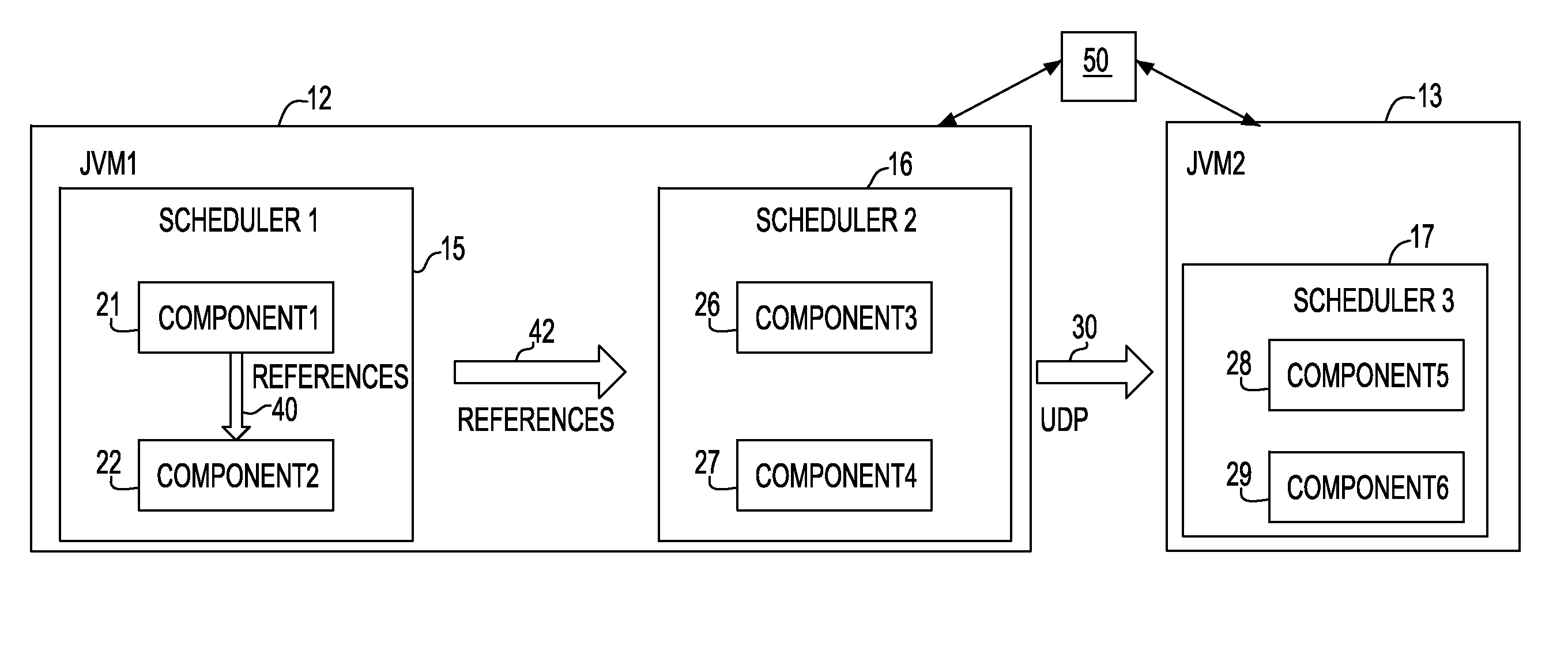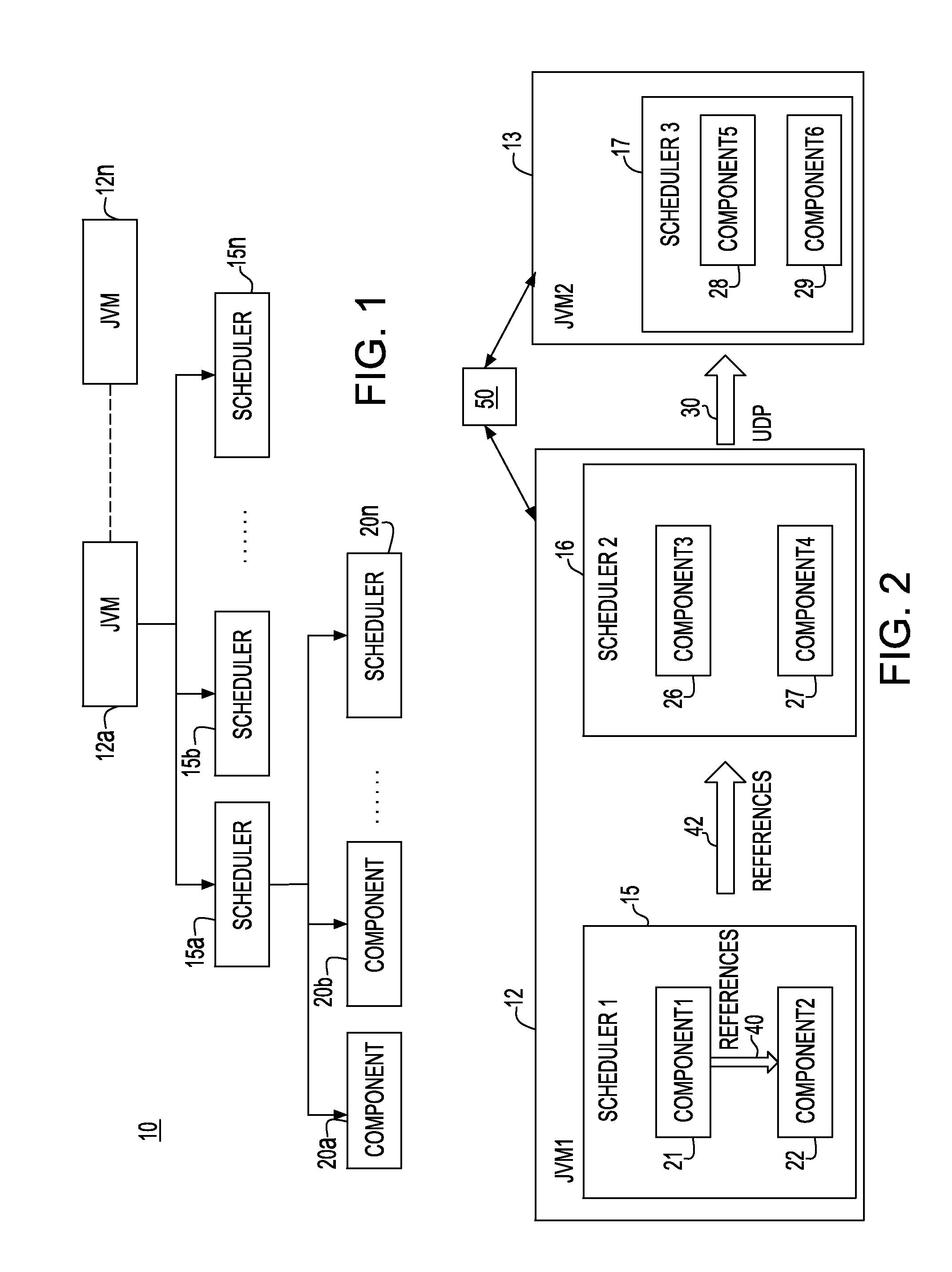System and method for time-aware run-time to guarantee time
a time-aware and run-time technology, applied in the field of application development tools, methods and systems for developing and executing distributed systems, can solve the problems of limited performance of such techniques, prone to errors, ad-hoc development of distributed fault-tolerant and highly available systems, and cost of less precision, so as to achieve high availability
- Summary
- Abstract
- Description
- Claims
- Application Information
AI Technical Summary
Benefits of technology
Problems solved by technology
Method used
Image
Examples
second embodiment
[0088]Time-driven silence: This second embodiment is even more aggressive than the embodiment discussed above, in that component 102 can periodically send silence information without waiting for a prompt from a receiving component. Let us suppose that component 102 is driven by messages from the external world. External messages are logged, and receive virtual timestamps from a clock. Now suppose that component 102 has been idle for more than a particular threshold of real time. In this case, component 102 receives a notification from a timer that this threshold has expires, it reads the clock—this value represents a number t guaranteed to be smaller than the time of the next message it will process—and then as above, executes its estimator program to compute the next silence range by computing t plus the number of ticks in the shortest possible path that would be executed by a future data message. Time-driven silence has the advantage over curiosity that it avoids the need for a ro...
third embodiment
[0089]Hyper-aggressive silence: The third embodiment is applicable in the case where the relative rates of the sending components 101 and 102 have been measured and can be modeled approximately as a known process, e.g. a Poisson process. A description of Poisson processes appears in M. K. Aguilera and R. E. Strom entitled “Efficient atomic broadcast using deterministic merge”, Proc. 19th Annual ACM Intl. Symp. on Principles of Distributed Computing (PODC-19), Portland, Oreg., USA, 209-218, 2000. Suppose, for instance, that components 101 and 102 have been measured over some recent past time to have average message rates of λ1 and λ2 respectively. Suppose that component 101 would have sent a message at time 1000. Rather than simply sending the message at time 1000, it will send additional silences. The silences would encompass not only the time that the next possible message would have taken to process, but also an additional bias reflecting an attempt to minimize the delay cost know...
PUM
 Login to View More
Login to View More Abstract
Description
Claims
Application Information
 Login to View More
Login to View More - R&D
- Intellectual Property
- Life Sciences
- Materials
- Tech Scout
- Unparalleled Data Quality
- Higher Quality Content
- 60% Fewer Hallucinations
Browse by: Latest US Patents, China's latest patents, Technical Efficacy Thesaurus, Application Domain, Technology Topic, Popular Technical Reports.
© 2025 PatSnap. All rights reserved.Legal|Privacy policy|Modern Slavery Act Transparency Statement|Sitemap|About US| Contact US: help@patsnap.com



